Are you Smarter than your Kid? 30 Mindboggling Brainteasers, Riddles, Trivia Questions & More
Children are often grilled and scolded for not studying enough, and constantly advised to read up more, and learn as much as they can. Naturally, all parents want their child to be the smartest and the most intelligent kid in the class – the one who knows the answers to all the questions posed by the teachers. But…. Here’s the catch. Can parents say the same for themselves?
Do parents actually believe that they know the answer to all the questions, based on the material their kids are studying every day or gearing up to study in the next grade? Popular TV Shows like Are you Smarter than a 5th Grader reminded us that while children are constantly building up their memory and learning skills, parents often tend to forget all that they learned over the years.
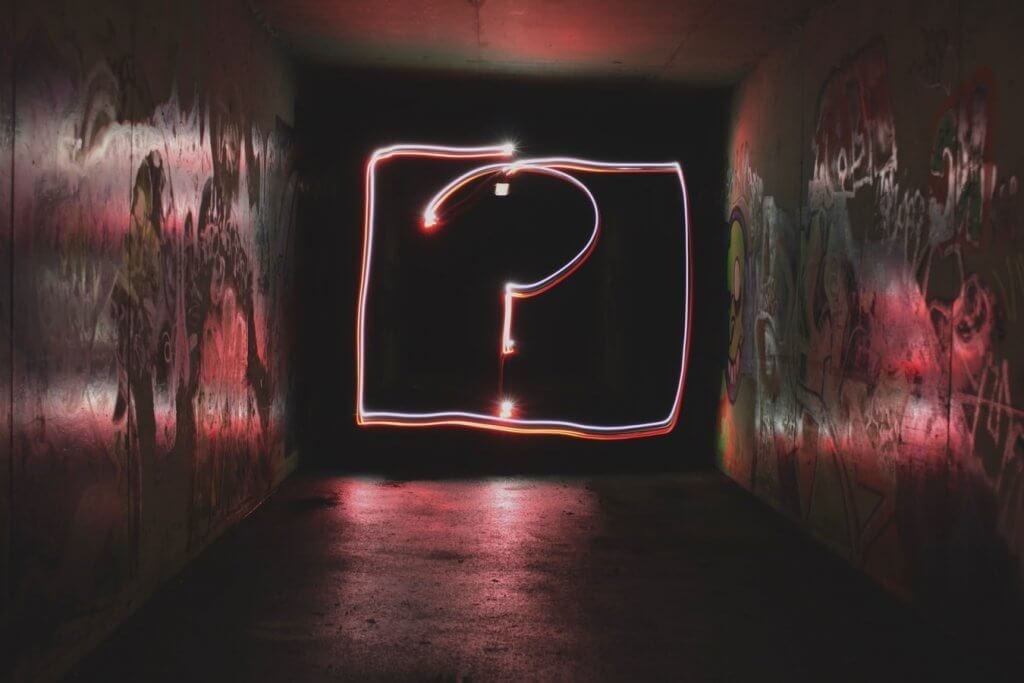
This article will walk you through 30 informative and fun questions, trivia, historical facts, brainteasers, riddles and much more. All the questions will test your ability to remember basic facts, alongside testing your abilities to use commons sense to answer some very basic questions.
It’s going to be a fun-filled ride of knowledge, and we strongly advise you to get your kids on board for this one!
Let’s get started, shall we?
1. 4 Days of the Week
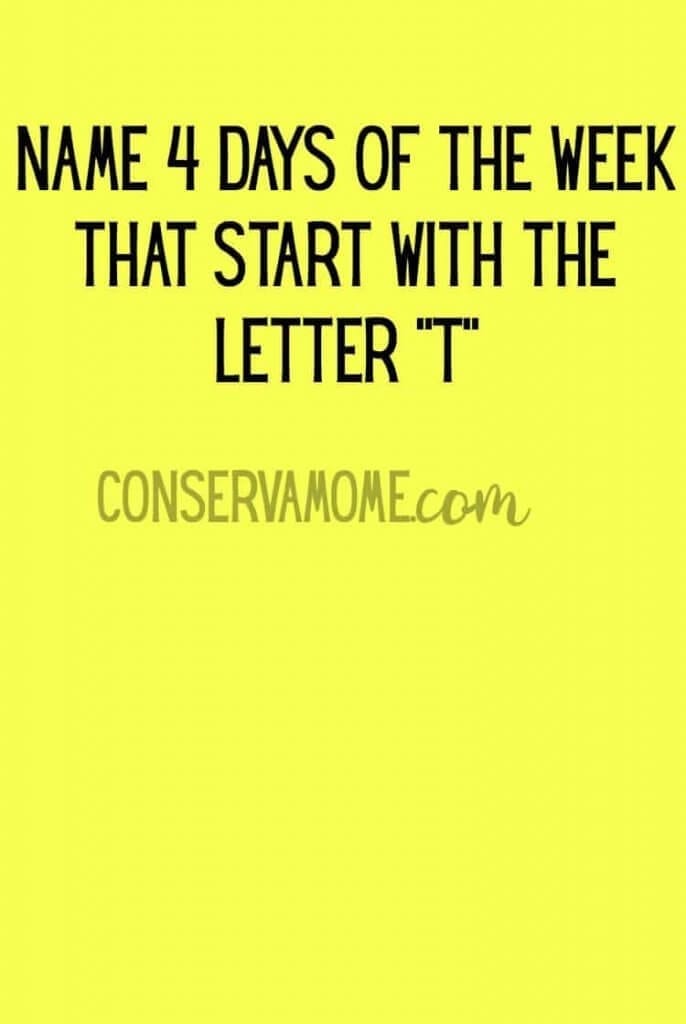
Shared by Elia, a mom of six from Pennsylvania, this nerve-racking brainteaser will certainly have you twisting your mind for the answer. So, what are the four days of the week that start with the letter “T” That should be simple, right? However, the only two days you can think of are Tuesday and Thursday? What are the other two? It’s quite easy, and you are constantly referring to those two days in all your conversations. What can they possibly be?
Answer: Today and Tomorrow. See, it wasn’t that difficult!
2. The Missing Sister
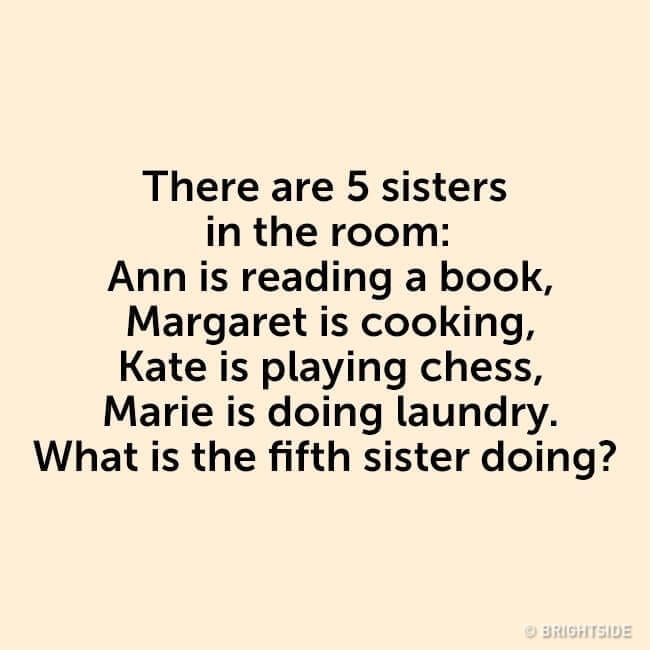
Here’s another fun brain teaser that forces you to think deep and concentrate. There are five sisters in the room, one is reading a book, the other is cooking, Kate is playing chess, and Marie is working her way through the laundry. So, what is the fifth one doing? The thing with brainteasers is that the answer always lies within the question, and you have to concentrate on the question to find the solution. Take a look at what all the sisters are doing once again, and the answer will be right in front of you!
Answer: She is playing chess with Kate. Obviously, because chess is a two-player game!
3. A Room of One’s Own

Children are always so good with riddles, but adults, always so focused on analytical thinking and reasoning, often tend to forget the basic use of common sense. If you disagree with that, try solving this riddle that was posted by a third-grader: What kind of room has no doors or windows?
Now, you must be thinking about warehouses and storage spaces, while the answer is quite simple, and can be found inside your own kitchen pantry. It’s a delicious food ingredient that we all crave, especially in our soups and sauces.
Answer: Mushroom
4. Driving Lessons

Here’s another brainteaser that will turn and twist your mind with its simplicity. Before we take a look at the question, keep in mind that the answer is always in the question, and simply requires the application of common sense in order for you to find it.
A girl who had just started learning to drive went down a one-way street in the wrong direction, but she did not break any laws. How can that be possible? Now, you must be thinking, she did break a law by driving one way and that too, in the wrong direction.
Answer: She wasn’t driving, she was walking!
5. Independence of Mexico
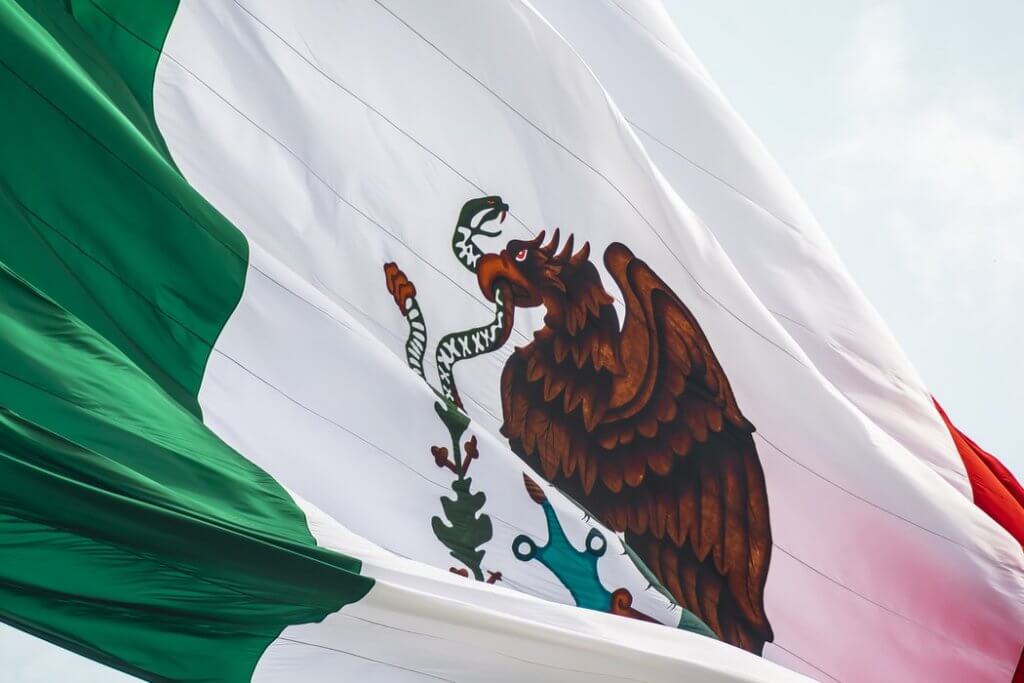
This is an elementary school question meant for first-grade history students, and it will test your history knowledge. Here goes: From which country did Mexico gain its independence in the 19th century?
The answer is quite simple, because Mexico is all about Spanish influence. Mexico gained its independence on 27th September 1821, and shortly after, in 1823, the Catholic monarchy was eradicated, and its place was taken by the Federal Republic of Mexico.
6. The First Thanksgiving

This question will take you all the way back in history to November 1621, compelling you to jog up your memory for trivia and historical facts surrounding the origination of the wonderful feasting tradition we all know as Thanksgiving.
The first Thanksgiving was celebrated by Native American tribes, and what other group of people? Now, you may know that the one group that celebrated Thanksgiving were the Wampanoag Indians, but who were the other people?
Answer: The Pilgrims, who were basically the English settlers who inhabited the Plymouth colony.
7. Machu Picchu
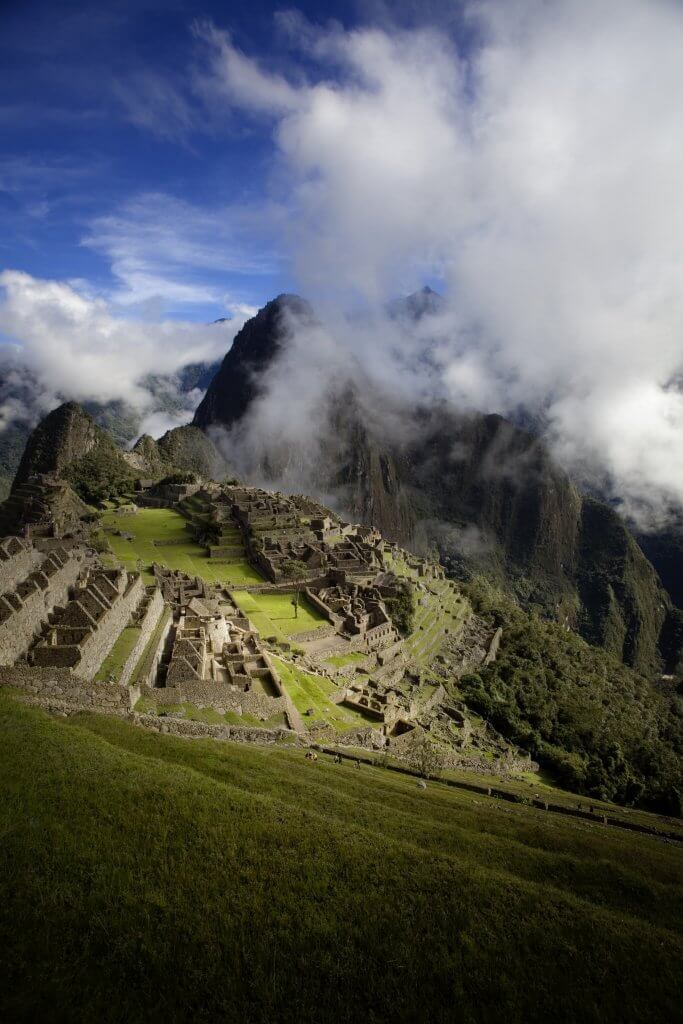
We’re all familiar with the spectacularly scenic mountain vistas located in Peru, after all, it is one of the leading nature destinations in the world. However, this elementary school question meant for fourth-graders will compel you to unravel the history of the Machu Picchu.
Which ancient civilization constructed the Machu Picchu complex in Peru? If you know anything at all about Peru’s ancient civilizations, the answer will be simple enough.
Answer: The Incas
Machu Picchu and its surrounding architecture were constructed on the orders of the ninth ruler of the Inca civilization, Pachacuti Inca Yupanqui, in the mid-1400s.
8. God of Music
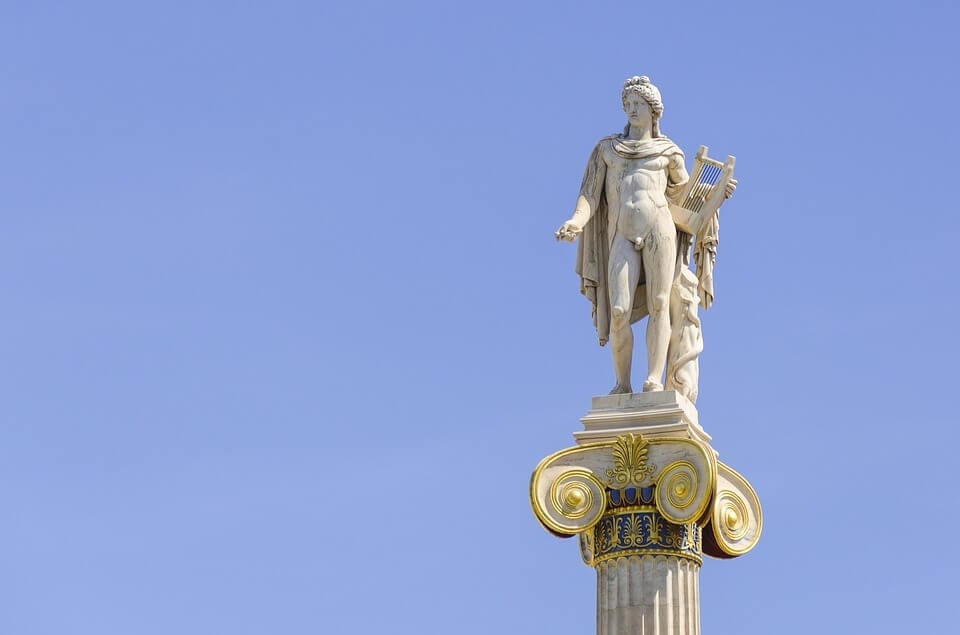
As we all know, the Greeks had Gods for everything, for instance, Ares the God of War, Dionysus the God of Vine, or Hades the God of Wealth, amongst many, many more. Do you remember the God of Music?
This is an elementary school question for fifth-grade history students, and if they know the answer, so should you!
Answer: Apollo
9. Titanic

Let’s admit that the majority of us are aware of the sinking of the Titanic because of our love for the spellbinding Hollywood Movie, starring the insanely talented Leonardo Di Caprio and Kate Winslet. Here’s an elementary school question for fifth-grade history students: In which year did the Titanic sink?
Answer: 1912
10. Ancient Egyptian Writings
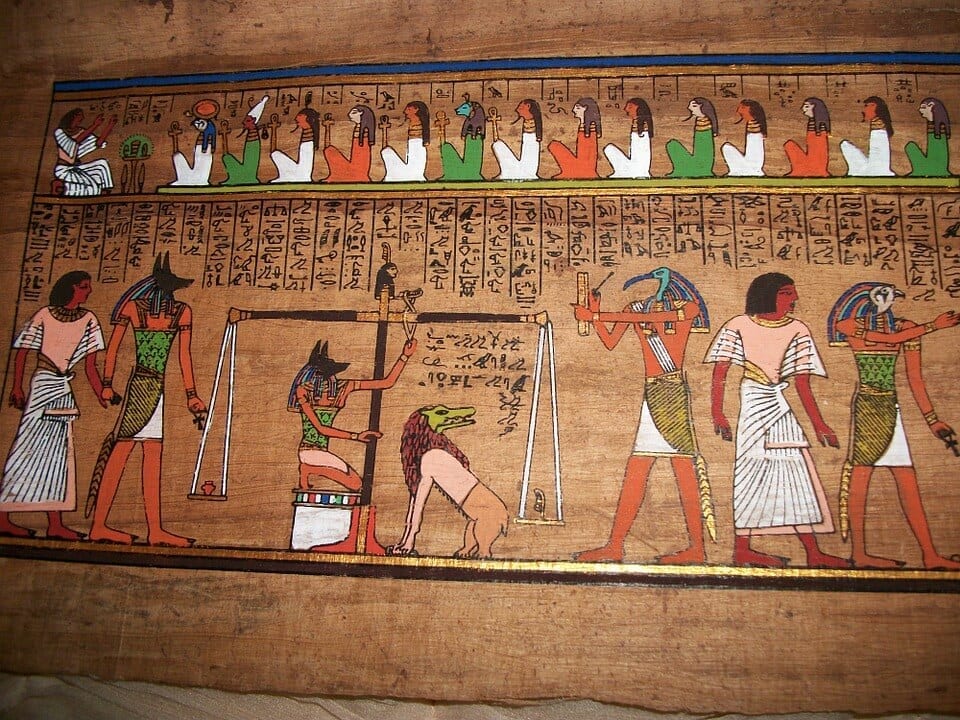
Another elementary school question meant for a fourth-grade history lesson that most adults will find difficult to answer.
Here’s the question: What is the name for the ancient Egyptian written language? This is the same pictorial language that we see carved in the ancient Egyptian structures and pyramids.
Answer: Hieroglyphics. Hieroglyphics is basically a system of pictorial writing that uses characters and symbols to represent objects, but linguists believe that these symbols stand for certain sounds.
11. The Cowboy
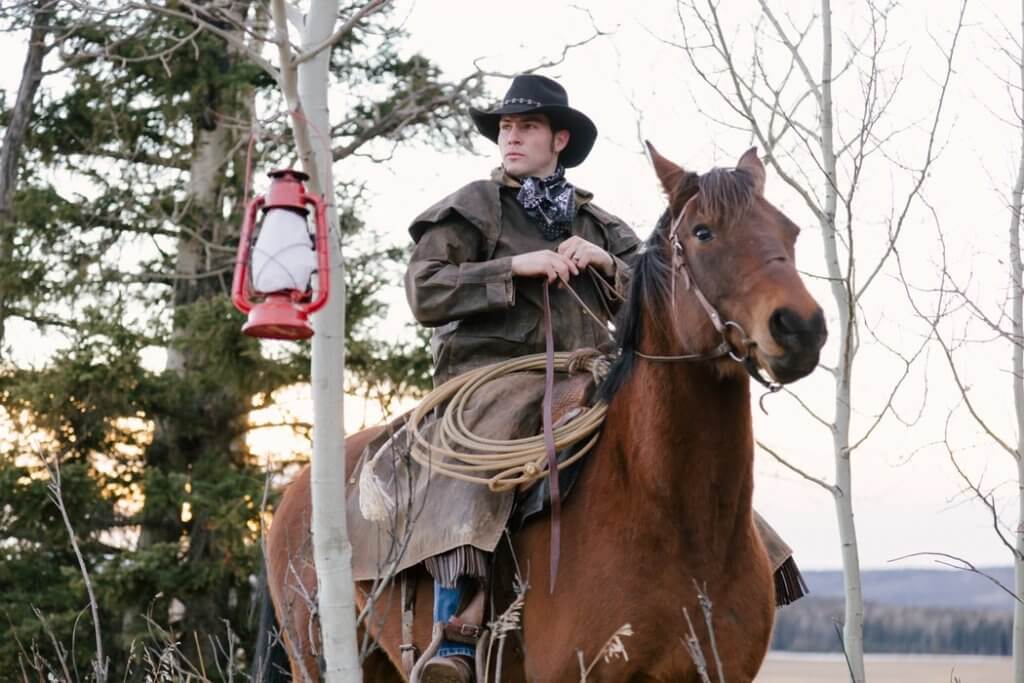
We’re back with another brainteaser, and this is definitely going to give you a hard time!
So, here goes: A cowboy arrived in town on Friday. He enjoyed his stay for three days but decided to ride out on Friday. How is that possible? Three days after Friday is technically Monday, so how could he ride out on Friday?
Once again, the answer lies within the question. Can you figure it out?
Answer: Friday is the name of his horse.
12. Math for Geniuses
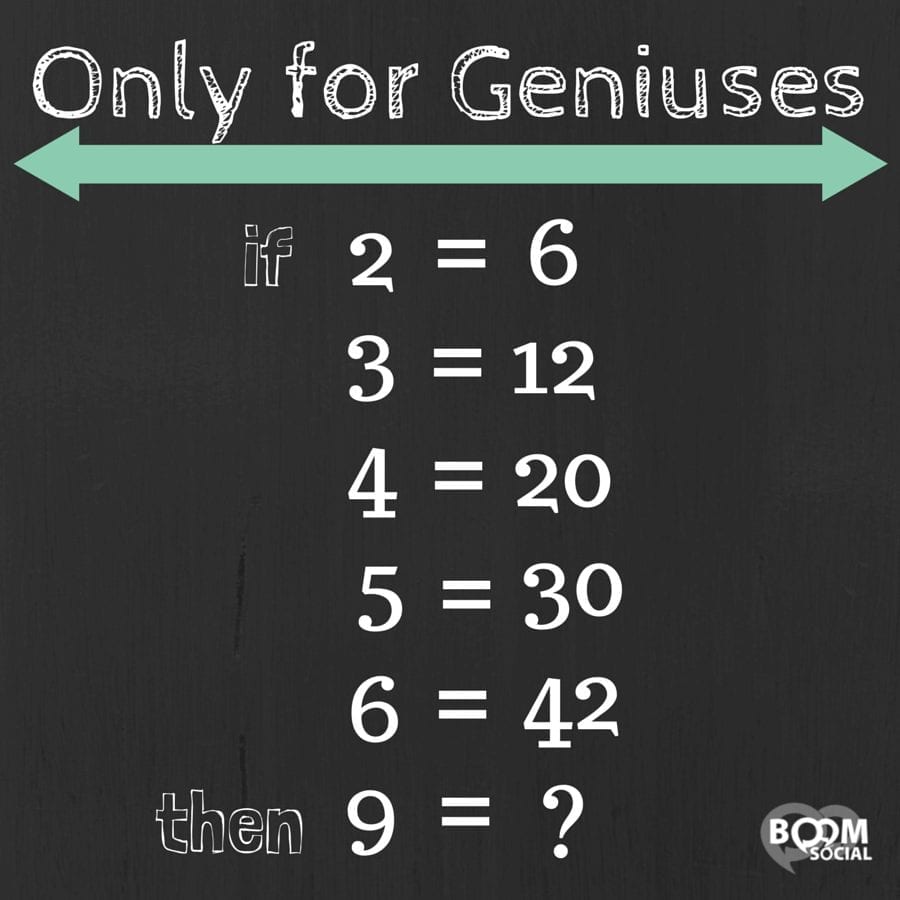
This is a mindboggling mental math problem shared by Janine, a certified professional teacher a blogger-mom, who also taught as a middle school math teacher.
At first glance, it is obvious that the numbers are all part of a pattern, which could either require you to multiply or divide perhaps. What could be the answer? Many people tend to make random guesses, but a fifth-grade math student would know that this is a basic core math question.
You see, in order to find the answer, you must look at the first two numbers, 2 and 6, to figure out the pattern. Which number do you multiply with 2 to get 6? This is the biggest clue to help you solve it.
Answer: It’s quite simple. Every number is multiplied by the preceding number to get the answer for each equation.
Here, take a look:
3 x 4 = 12
4 x 5 = 20
5 x 6 = 30
6 x 7 = 42
The confusion occurred because the numbers 7 and are missing. So basically, 7 x 8 = 56 and 8 x 9 = 72.
So, in order to find your answer, you must make this equation: 9 x 10 = 90.
13. The Invention of Fireworks!

The very first fireworks were invented back in the 17th century. Can you tell the name of the country where fireworks were invented?
Answer: China
14. Guess the City!
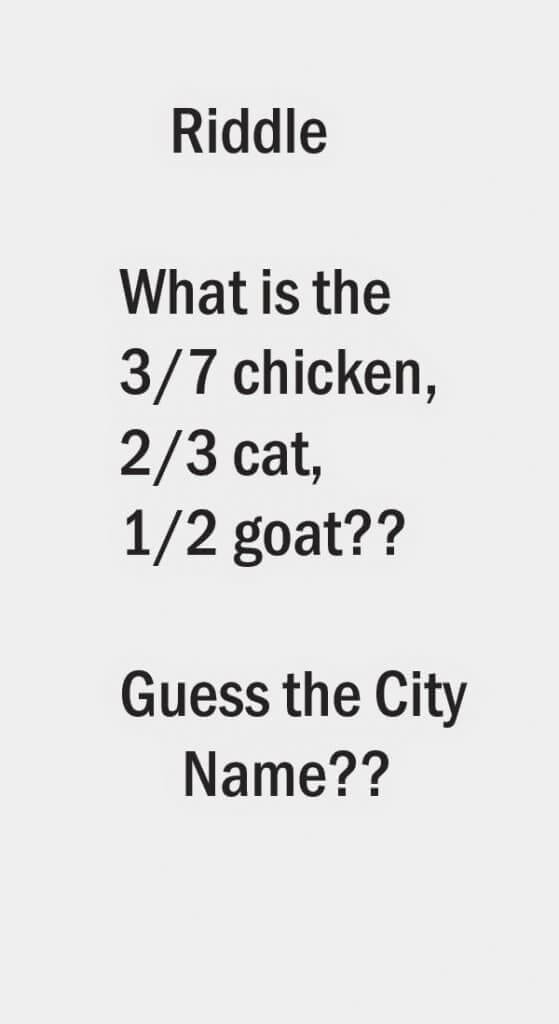
This is a fun little riddle that will test a great many aspects, including your math skills, your linguistic skills, and your geography.
Hint: This is the seventh-largest city of the United States, famous in the world for its mesmerizing skylines and skyscrapers, not to mention, its artistic and architectural heritage.
Can you guess the name of the city? This riddle is originally meant for fifth graders, so if you can’t seem to figure out the answer, feel free to consult your children.
Answer: Chicago. Wasn’t that simple enough?
15.The Red Planet
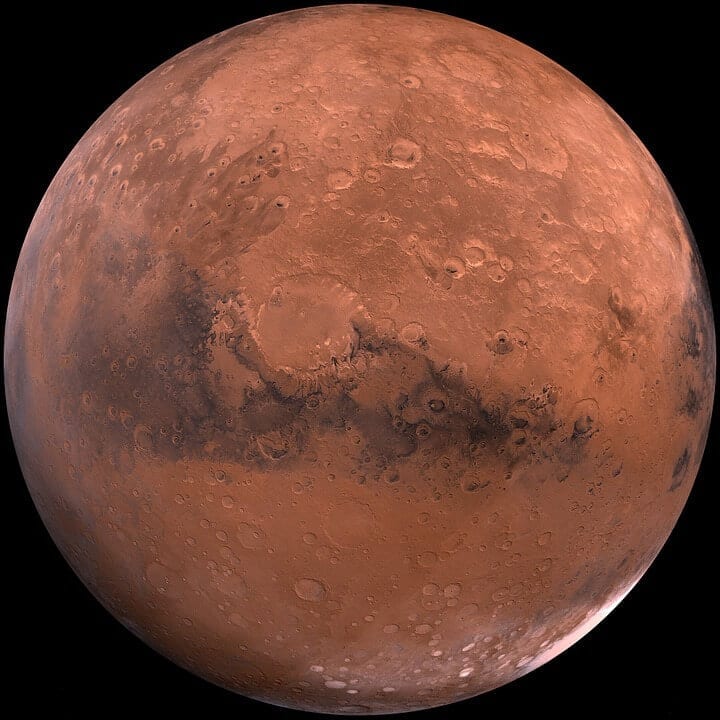
This is an elementary school question meant for fourth-grade geography students and given the extensive number of Hollywood movies and TV shows centered on this planet, this should be fairly easy, even if your geography skills are dismal.
Here’s an amazing hint to make it easier: This planet was also named after the Roman God of War.
Answer: Mars
16. Layers of the Earth

If you think the last question was easy, here’s another elementary school geography question meant for fifth-grade students. Are you ready?
We all know that the Earth has four layers, and mantle is the thickest amongst all these layers. What is the name of the thinnest layer of Earth?
Now, this would require you to go back in time, and unravel your brain for remnants of the geography lessons that introduced you to the layers of the Earth over the years. The answer is quite simple.
Answer: The crust is the thinnest, outermost layer of the Earth.
17. Never in a Thousand Years
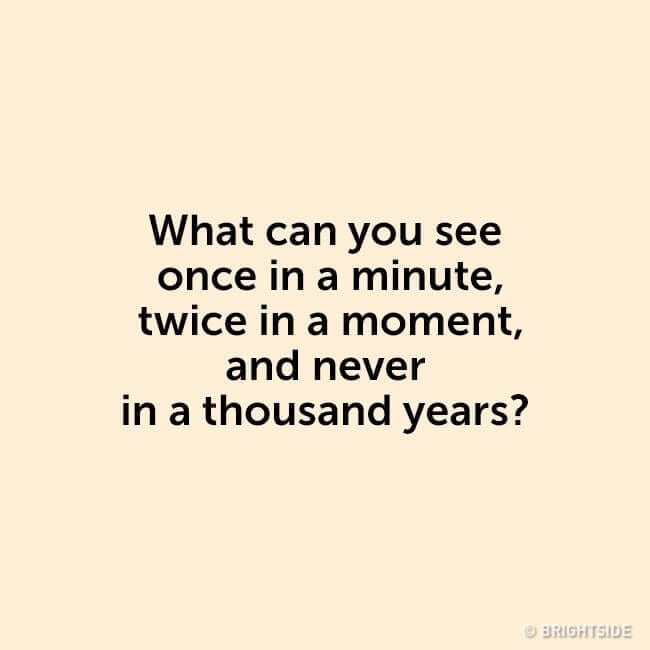
Here’s another brilliant brainteaser shared by Brightside that will have you nagging your brain for rare lunar eclipses and moon sightings. What is it that you see once in a minute, twice in a moment, and never in a thousand years?
Allow us to remind you that the answer for brainteasers always lies within the question. So, instead of surfing Google in search of rare scientific breakthroughs and historical events, just read and reread the question, and with a little bit of common sense, you’ll be able to figure it out.
Answer: The letter ‘M’.
18. Satellite in Space

If you’re a space geek, this is just the question you were waiting. This is an elementary school question for fourth-grade students.
What was the name of the first satellite rocketed into orbit by the United States of America?
Answer: The Explorer 1 was the first satellite launched by the US, as part of the contributions made by different countries in the International Geophysical Year. It was also the United States’ attempt to counter Russia, then Soviet Union’s successful launches of the Sputnik 1 and 2. The launch of the Explorer 1, on 31st January 1958, also marked the start of the Cold War.
19. Storytelling

If you’re an avid book reader, this answer will come naturally to you. It’s an elementary school English and literature question, meant for fourth-grade students. It basically requires you to examine the different kinds of storytelling styles.
Here’s the question: What is the name of a story that ends with a moral lesson?
Answer: A fable
20. World War II
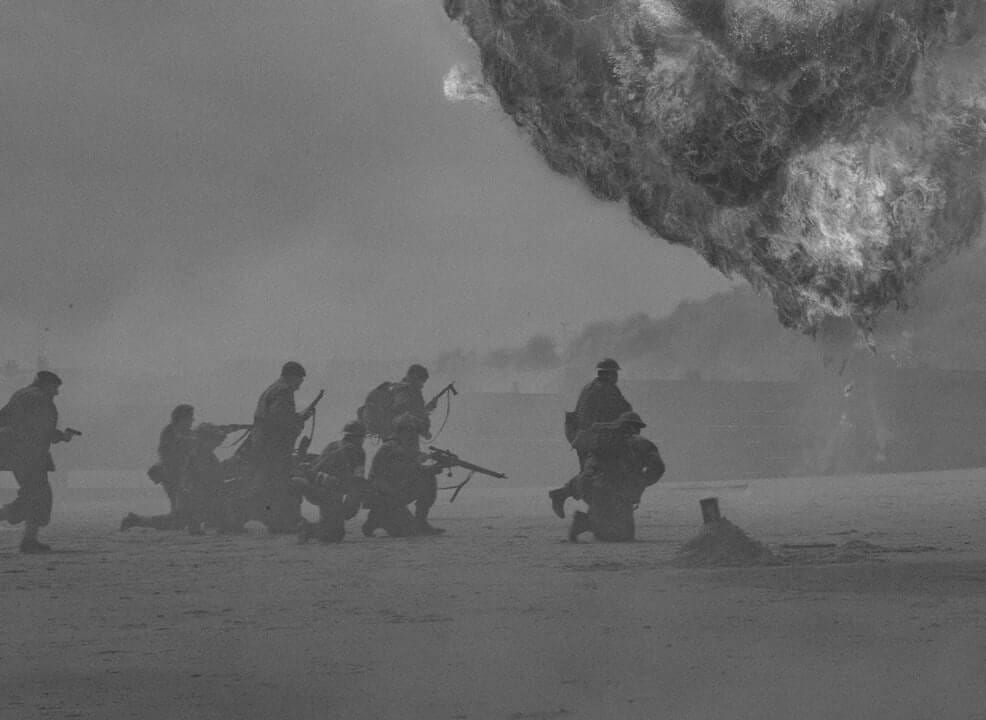
What was the name given to the alliance of Germany, Japan, and Italy during the WII?
Answer: The Axis of Evil.
21. The Bronte Sisters

Here’s another question for literature lovers, especially the book nerds who devour classic literature and books with great joy.
Which Bronte Sister authored the famous classic English novel, Jane Eyre? If you have read the Jane Eyre, which is quite hard to miss at it is added to the curriculum of most students and schools, you will easily remember the answer.
Hint: This particular Miss Bronte is also the author of Shirley, Villette and The Professor.
Answer: Charlotte Bronte
22. Stacks of Hay
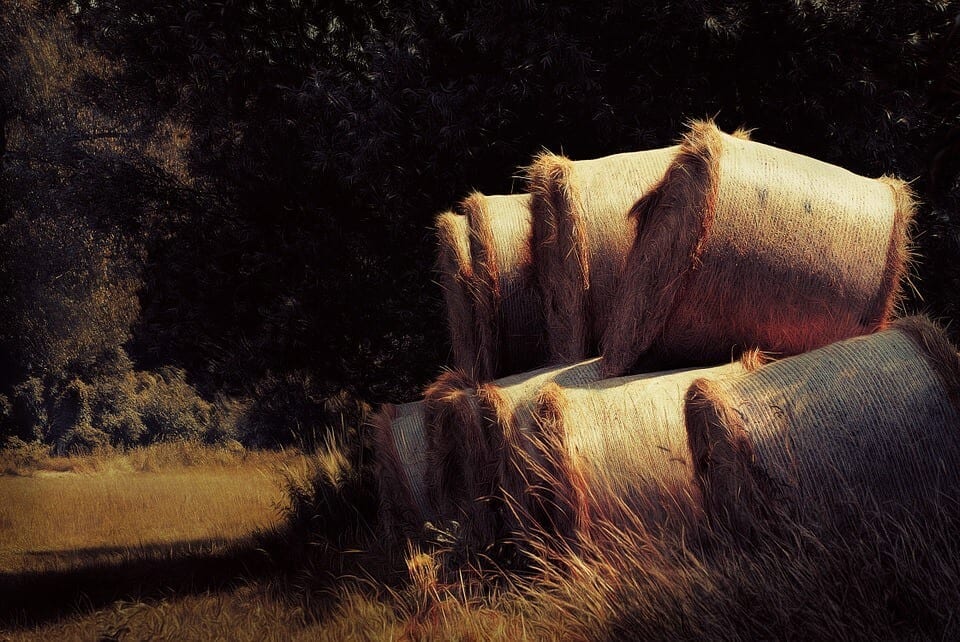
This one is about haystacks, and it compels you to use your brain instead of focusing too much on the math equations. Are you ready?
Here it goes: There are six haystacks gathered in one corner of the room, a third as many in another corner, four times more haystacks in the third corner, and eight in the fourth corner. The farmer picks up the hay and throws it into a single pile in the center of the field, but accidentally, one of the stacks fall down and scatter all over the floor. How many haystacks does the farmer have now?
Allow us to remind you that the answer does not lie in math equations but rather, in the question itself. Just read it again and play the scenario in your mind to find your answer!
Answer: Just one haystack, as he as piled all the hay in the center of the field.
23. The Emperor
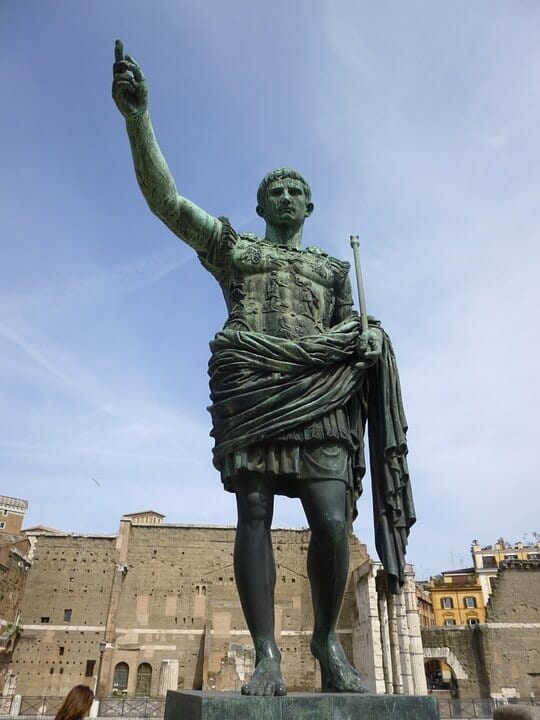
The famous emperor, Julius Caesar was the emperor of which empire?
Answer: The Roman Empire
24. What can you Hold?

Here’s an interesting riddle shared by Bored Panda, and it will test nothing more than your ability to use common sense where it is required. The question is pretty simple and provides the entire answer if you read it carefully.
Here, takes a look: What can you hold in your right hand, but not in your left?
You must be thinking about all the items that need to be held with the right hand, but the answer is quite simple and very close to your right hand.
Answer: Your left hand. Wasn’t that simple enough?
25. The Bloodiest Battle
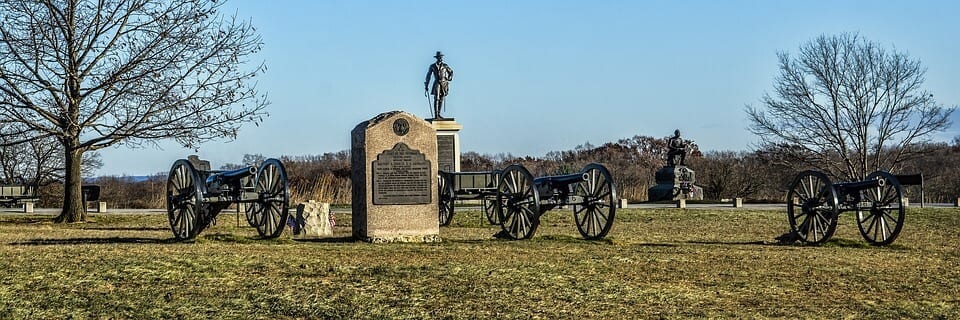
The American Civil War was a devastating turn of events that created the most powerful country in the world, however, it ripped apart centuries of traditions, settlements, plantations, and families across the country.
This is an elementary school history question meant for fifth-grade students, and it will test your knowledge of the American Civil War.
Here, take a look: What is the name bloodiest of the battle fought during the American Civil War?
Answer: The Battle of Gettysburg was fought between the Union and the Confederate forces during the American Civil War, from the 1st-3rd July 1863. It was fought around the town of Gettysburg, Pennsylvania, and it is remembered for the largest number of causalities, which is why it is regarded as the turning point of the civil war.
26. Unseen by Humans
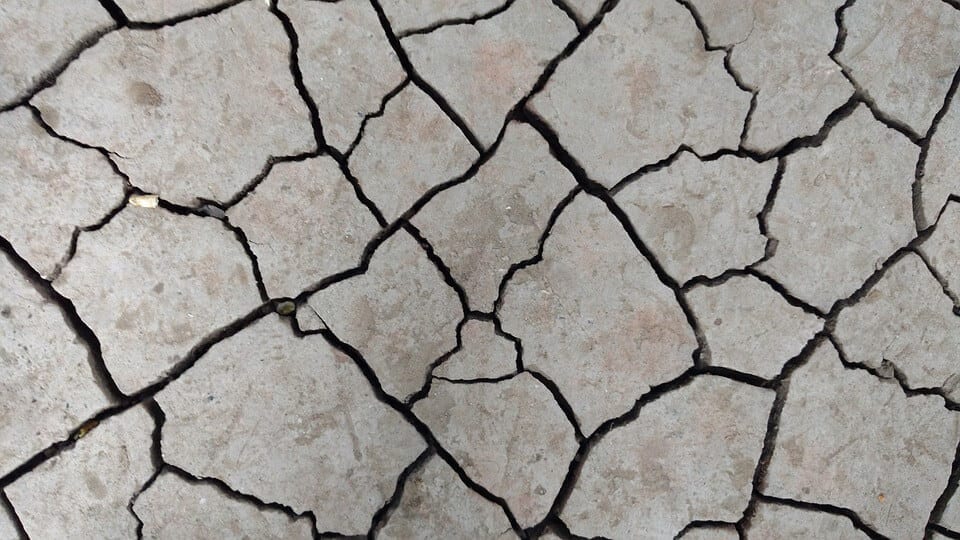
Allow us to present you with a rather peculiar riddle that is meant for elementary school science students belonging to the fourth grade. Are you ready?
Here it goes: I am always shifting around, though very slowly. I hardly move more than a few inches at a time. If I make a large movement, I can kill many people. I am enormous, and yet, I remain unseen by humans. What am I?
You must be thinking about monsters and tornados, but the answer is more scientific than you think.
Hint: Think about large and sudden movements of the Earth that cause devastation and deaths.
Answer: Tectonic plates, which tend to cause earthquakes when their movement is too aggressive.
27. Quick & Deadly
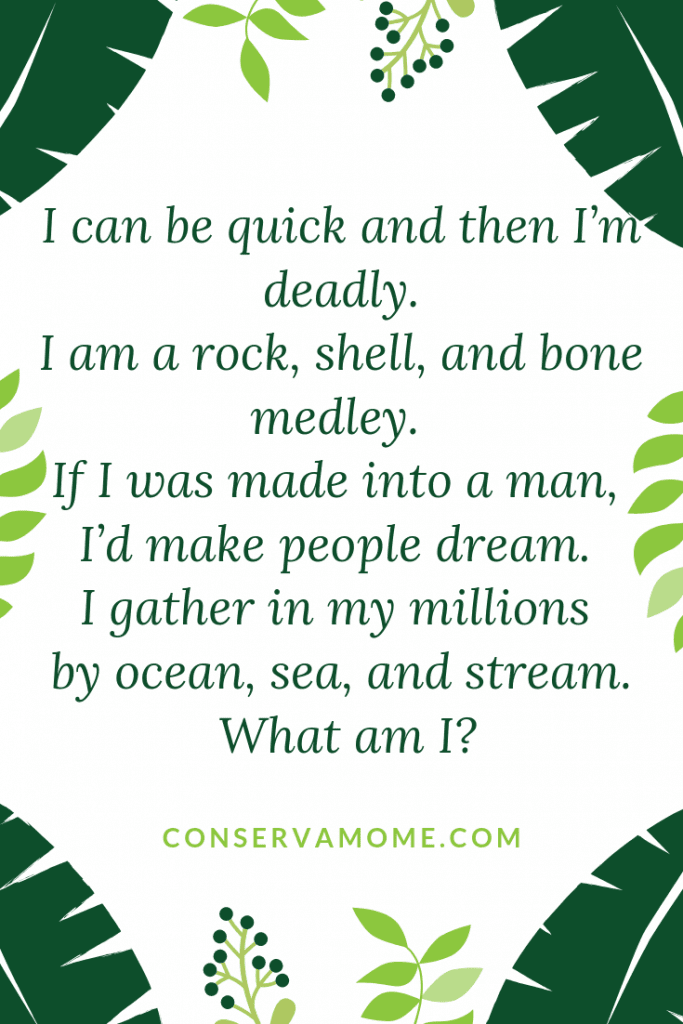
Here’s another mindboggling brainteaser shared by Elia, the talented blogger mom behind Conservamome.
Let’s take a look at the question: I can be quick and then I’m deadly. I am a rock, shell, and bone medley. If I was made into a man, I’d make people dream. I gather in my millions by ocean, sea, and stream. What am I?
So, what can be deadly if its quick, a mixture of bone, shell, and rocks, and a man who would make people dream? This can be a tough riddle as the answer no longer lies within the question, and you need to think hard to find the answer.
Answer: Sand
If you’re wondering why sand is the answer, think again. Quicksand can be both, quick and deadly, a sandman is a mythical character who puts people to sleep and gifts them good dreams, and sand is a mixture of shells, rocks, and bones.
28. Explorers of Greenland

The breathtaking region that we know as Greenland today was once completely non-existent for the people of Europe, and it didn’t officially make it to the World Map until the 10th century. In the 10th century, a group of warriors/explorers arrived at the island and made it their settlement.
Here’s your question: Which group of people discovered the settlements of Greenland?
This is a tricky one and will require at least some knowledge of early European settlements and their history.
Answer: Greenland was discovered by a group of Viking explorers led by Erik the Red, who was known by the name red as symbolic for his fiery red hair and beard, or perhaps, his scalding temper. This hot-headed chap got himself exiled, first from Norway, and later from Iceland, Finally, he found his home in Greenland, where he is remembered to this day.
29. Venetian Explorer to Asia

Another riveting question that will take you back to the 13th century: What is the name of the Venetian explorer to traveled to China and compiled his memories in a travel book that introduced Europe to the wonders of Asia?
If you have read anything at all about China, the Mongol Empire, and European travelers to Asia, you will find this incredibly easy.
Answer: Marco Polo
30. Feather Writing
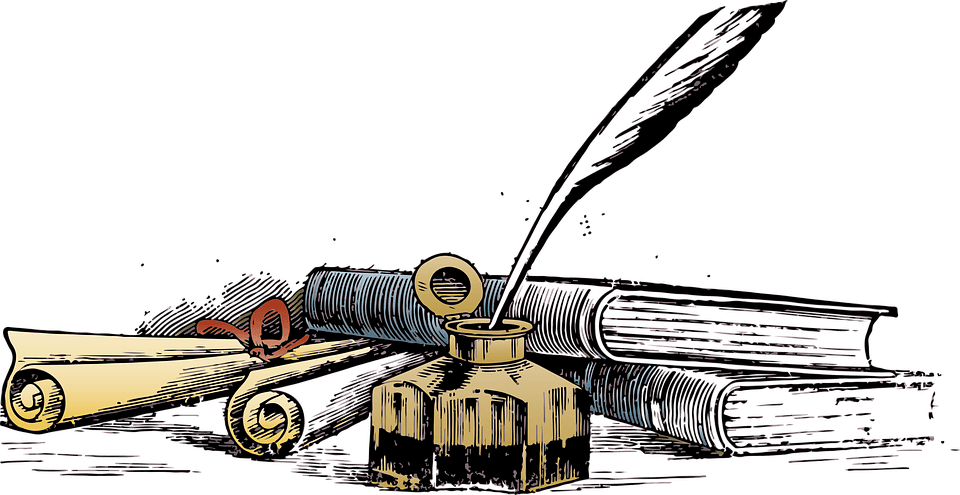
What is the name of the kind of feather that people used to write back in the Middle Ages?
Hint: It begins with the letter Q.
Answer: Quill
What type of feather, beginning with letter Q, did people write with during the Middle Ages? Quill
